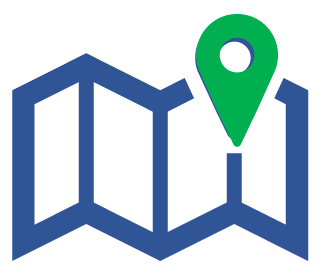PA BaseMap 2030
Introduction
 Maps have always guided decisions – and perhaps never more so than today. Things like emergency response, land development, taxation, and even personal navigation all depend on reliable mapping. However, many people probably don’t think about where those maps originate, when they were last updated, or who maintains them.
Maps have always guided decisions – and perhaps never more so than today. Things like emergency response, land development, taxation, and even personal navigation all depend on reliable mapping. However, many people probably don’t think about where those maps originate, when they were last updated, or who maintains them.
Federal, state, and local governments are each responsible for a piece of the puzzle, yet each entity often acts independently and inadvertently creates siloed data sets and maps. This lack of collaboration on the planning, costs, and responsibilities inhibits our ability to share this data despite having plenty of information at our fingertips.
Goal
 The goal of PA BaseMap 2030 is to change the way we make and share maps (and the data that connects to them) by identifying logical workflow changes and pathways for collaboration. PA BaseMap 2030 will help guide interagency and intergovernmental efforts on data development, ownership, funding, and sharing. The result will be a clean, well-maintained foundation of authoritative data that our citizens can depend on being current and reliable, and for which ongoing process improvement is fundamental.
The goal of PA BaseMap 2030 is to change the way we make and share maps (and the data that connects to them) by identifying logical workflow changes and pathways for collaboration. PA BaseMap 2030 will help guide interagency and intergovernmental efforts on data development, ownership, funding, and sharing. The result will be a clean, well-maintained foundation of authoritative data that our citizens can depend on being current and reliable, and for which ongoing process improvement is fundamental.
The State Geospatial Coordinating Board (GeoBoard), in alignment with the Geospatial Strategic Plan, is actively promoting PA BaseMap 2030, which defines our authoritative data to be:
- Based upon identified standards
- Governed by clear stewardship and responsibility
- Supported by defined quality assurance/quality control processes
- Collected and distributed through identified aggregation and distribution processes
- Managed through defined change management processes
Objectives
Key objectives of the PA BaseMap 2030 initiative are to:
- Coordinate data collection/development efforts to ensure efficient use of resources
- Provide open, standards-driven, authoritative data that is free to access and easy to find and use – especially if it’s created with public funds
- Deliver a common map that can be used by all levels of government for decision making
- Establish a single version of base map data layers where applicable (i.e., roads, streams, civic boundaries)
- Continue to evolve to support computations and display in a stable 3D framework
Next Steps
 The next step for PA BaseMap 2030 is for individual GeoBoard working groups to suggest and promote end-to-end requirements and processes for each layer that provide the end user with current, authoritative data.
The next step for PA BaseMap 2030 is for individual GeoBoard working groups to suggest and promote end-to-end requirements and processes for each layer that provide the end user with current, authoritative data.
Data Layers
PA BaseMap 2030 includes the same datasets as federal guidance on the National Spatial Data Infrastructure (NSDI).
- Geodetic
- Topography
- Hydrography
- Parcels
- Roads
- Remote Sensing
- Civic Boundaries
- Addresses